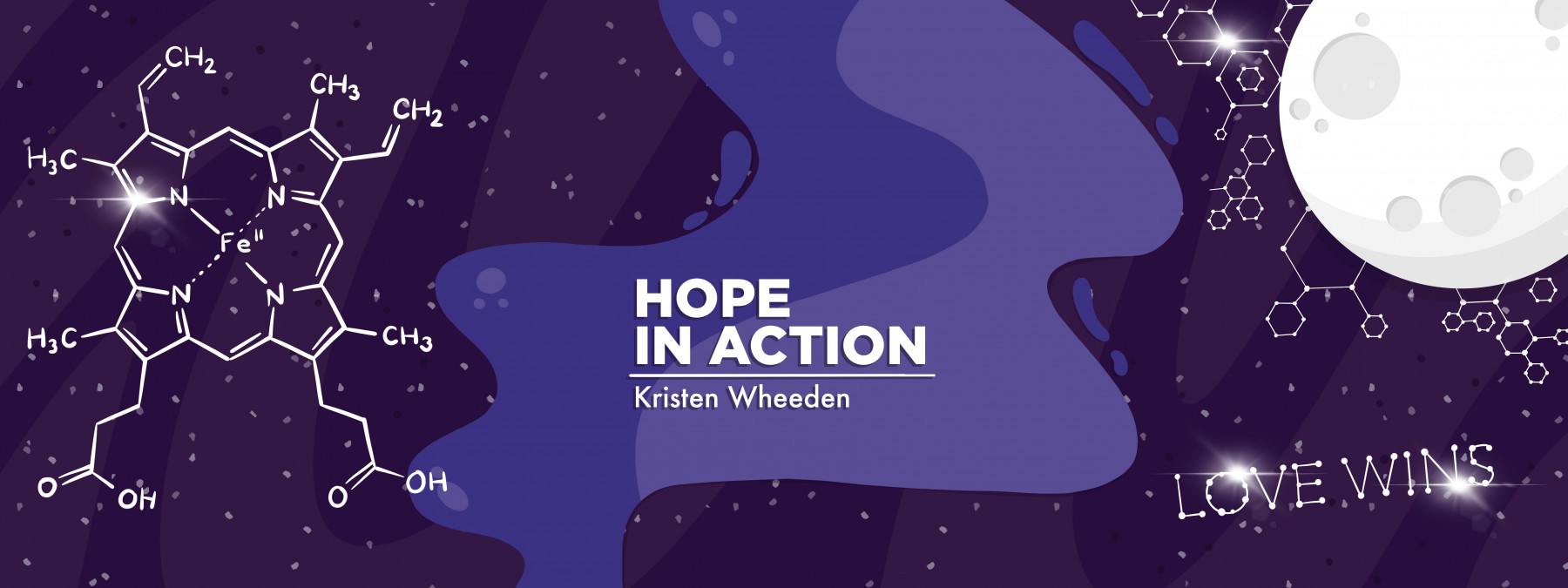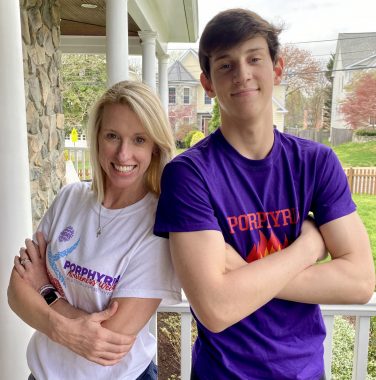Putting Hope Into Action After My Son’s Porphyria Diagnosis
Written by |

On a bright day in mid-2009, I covered my son Brady, then 3, from head to toe and tucked him deeply in my arms. We rushed into a new doctor’s office — our potential diagnostic superhero — to discover what was causing my son’s horrific pain.
Having been to countless doctors’ offices already, my expectations were low as I ticked off his strange symptoms: “Can’t be in the sun or heat. With exposure, writhes in pain. There is nothing to see on his body. Rubs his hands relentlessly. Eyes wild with terror.”
I’d already been lectured by an allergist, told that dermatology “is a visual science and there’s nothing to see here,” offered prednisone by ER doctors who shrugged their shoulders, and heard suggestions that perhaps detergent, chlorine, or child tantrums were to blame. Some even blamed me.
But on this day, after intently listening and performing a cursory inspection of my son, a brilliant physician had spoken the words “erythropoietic protoporphyria.” It was as if he had diagnosed this ultra-rare disease every day.
If his suspicions were true, it would mean that Brady would live with a rare, phototoxic, genetic disease that causes intense pain triggered by the sun. There would be nothing to relieve his exquisite pain except time. The sun! Really?
I was stunned.
Armed with a lab slip for bloodwork, a couple of brochures on how bad the sun is anyway, and pocket-sized samples of ineffective sunblock, we returned to the safety of the car, which had protective towels secured in the windows and a blankie to drape over Brady. In disbelief, we headed home to wait.
Soon, the call that would change everything came. My sweet and vulnerable youngest son did indeed have erythropoietic protoporphyria, or EPP. “Dr. Brilliant” had diagnosed just one prior case in his career, and it had stuck with him. A follow-up appointment revealed that — as is the case with most physicians regarding porphyria — delivering a diagnosis was the extent of his knowledge about the disease.
I remember crumpling to the floor in a ball of tears, feeling hopeless. How does one live without the sun? How do I let my other boys roam free while giving Brady constant protection? What were the implications of this disease, I desperately wondered?
In that moment, I went from being a mom to being a caregiver, advocate, protector, defender, and all-around mom warrior. I was on a mission.
What came next? Anything I could find and do. We went to Camp Sundown, a “night camp” for those with xeroderma pigmentosa, where we made lifelong friends. We implemented a 504 plan to help Brady acclimate in school. We found Camp Discovery, a camp for kids with chronic skin conditions, and met with every single teacher and leader in his life. We tailored a community that surrounded him in care and love.
My husband became a coach to enable sports. We inspected fields, fought umpires about clothing, and educated fellow parents. We shielded him from people – both children and adults – who mocked him. He was even featured on an hour-long primetime episode of “Dateline NBC!”
And in all that, I found hope.
Hope that Brady would live a fulfilling life despite this rare disorder.
Hope that I would be a strong parent for him and teach him to be a self-advocate.
Hope that researchers were studying this disease.
Hope that everyone living with any type of porphyria would have access to, and benefit from, proper diagnosis, disease management, and potential therapies.
I dipped my toe into the waters of porphyria with EPP, but quickly fell all the way in to help support everyone who is affected by this disease. Porphyria patients are in dire need of more — more educated physicians, more awareness of their disease, more research, and more treatments.
I participated in the Rare Disease Congressional Caucus on Capitol Hill, attended meetings at the U.S. Food and Drug Administration, and learned about the work being done by the National Institutes of Health. That’s where I heard Dr. Christopher Austin, then director of the National Center for Advancing Translational Sciences, note that, “Hope is ineffective without action.” This became my mantra and has since guided me.
I could wistfully hope for all of the things on my wish list for Brady and others like him to come to fruition, or I could jump into action alongside other porphyria warriors to ensure success.

Kristen Wheeden and her son Brady. (Courtesy of Kristen Wheeden)
Brady, my true superhero, is now a thriving, resilient 16-year-old. He and I transcend the typical mother-son connection, as we are bound by a special caregiver-patient relationship that defies explanation.
As for me, I rose up from that crumpled ball on the floor and found a voice. By connecting with thousands of other patients and caregivers across the porphyria community, and with the help of expert international doctors, I gained deep knowledge of the needs in our community.
I hope beyond measure that a world without the pain and the challenges of porphyria will soon exist for our beloved and beautiful community — and I’ll strive to help us get there. To me, that’s “Hope in Action.”
***
Note: Porphyria News is strictly a news and information website about the disease. It does not provide medical advice, diagnosis, or treatment. This content is not intended to be a substitute for professional medical advice, diagnosis, or treatment. Always seek the advice of your physician or other qualified health provider with any questions you may have regarding a medical condition. Never disregard professional medical advice or delay in seeking it because of something you have read on this website. The opinions expressed in this column are not those of Porphyria News or its parent company, Bionews, and are intended to spark discussion about issues pertaining to porphyria.







Richard Poulin
I share your pain of going on a diagnostic journey with my child too. I remember my wife repeating her mantra of symptoms she was seeing and sharing her book of notes with the doctors to no avail. Hope is powerful. Hope in action is unstoppable.
Anne Jacobs
You know how I feel about you and how much your love, friendship and support getting my daughter help when nobody else would help! You know our story so well and I loved reading your story! Hugs my friend!
Melissa Kemp
Beautiful written article. This mother’s fight for her child’s well-being brought tears to my eyes! Wonder Woman and her Wonder Son.